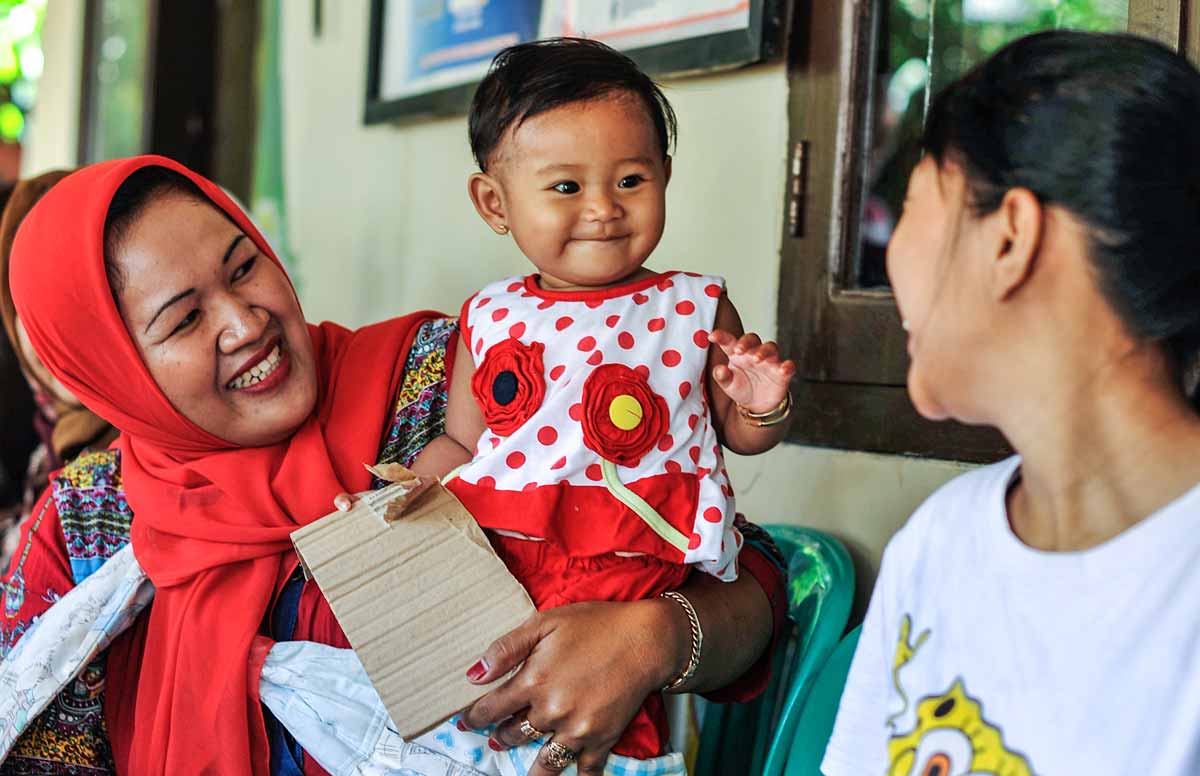Back to
Gavi’s approach to engaging with middle-income countries
A key tool for addressing threats to equity and sustainability

A key tool for addressing threats to equity and sustainability
In December 2020, the Gavi Board approved a new approach to engagement with middle-income countries in the Gavi 5.0 strategic period (the “MICs Approach”). Serving as a key tool for addressing threats to the equity and sustainability of routine immunisation programmes, the MICs Approach contributes to Gavi’s overall vision of leaving no one behind with immunisation.
Whilst most countries maintain programme performance following the transition from Gavi support, some have gaps in programmatic capacities which can create a risk of backsliding in vaccine coverage. This risk has increasingly become a reality in the context of the pandemic, presenting a significant threat to intra-country equity, as backsliding disproportionately impacts the most vulnerable populations.
Some former-Gavi-eligible countries are also missing critical, life-saving vaccines, presenting a threat to inter-country equity. Of the 19 countries that have transitioned as of 2022, 13 have not yet introduced at least one of pneumococcal conjugate vaccine (PCV), rotavirus vaccine, or human papillomavirus (HPV) vaccine. Despite higher immunisation investments on average, several never-Gavi-eligible middle-income countries (i.e., those that have not previously been eligible for Gavi support) are similarly lagging behind in introducing these vaccines relative to countries eligible for Gavi support, furthering the threat to inter-country equity. Moreover, these vaccines are in fact available in many countries, but often only in the private sector and therefore out of reach for the most vulnerable.
In this context, the MICs Approach has two overarching objectives:
Given the constraints imposed by the pandemic, as well as its worrying impact on routine immunisation programmes, the MICs Approach initially focussed on preventing and mitigating backsliding in former-Gavi eligible countries. As of June 2022, the focus of the MICs Approach broadened to also include a proactive effort to drive new vaccine introductions, for which the Gavi Board approved an expanded suite of support.
Country eligibility under the MICs Approach includes former-Gavi eligible countries, never-Gavi eligible lower middle-income countries (LMICs) and additional IDA-eligible economies. Please find the list of eligible countries as of July 2022 here, all of which will retain their eligibility through the end of the Gavi 5.0 strategic period. Note that the list will be updated to include any countries reclassified as LMICs based on their 2022 or 2023 GNI p.c., released by the World Bank in 2023 and 2024 respectively. Additional former-Gavi eligible countries will also be added as they transition from Gavi support.
Gavi provides support to address systemic issues that commonly stand in the way of sustainable and equitable new vaccine introductions, as well as shared risk factors for backsliding in vaccine coverage. Gavi works hand-in-hand with core and expanded partners to achieve these outcomes, with efforts including:
At the same time, Gavi provides tailored support in response to country-specific needs in line with the MICs Approach objectives. This includes support to mitigate backsliding in a select group of former-Gavi eligible countries1 that have seen significant and sustained reductions in vaccine coverage. Gavi also provides country-specific support to drive the sustainable and equitable introduction of PCV, rotavirus, and HPV vaccines. This support is available to all countries missing at least one of the three key vaccines and depending on country need may include:
Finally, Gavi supports sustainable access to PCV, rotavirus, and HPV vaccines, including access to sustainable prices, in collaboration with UNICEF Supply Division by helping to reduce the barriers that countries commonly face in accessing pooled procurement mechanisms.
Countries eligible under the MICs Approach facing challenges related to fragility, emergencies and displaced populations may be able to access dedicated support to help maintain their routine immunisation programmes. Any such support is determined on a case-by-case basis and contingent upon the country satisfying the requisite conditions. These conditions include:
Should a country meet these conditions, support may potentially be available in the form of:
Countries interested in learning more about the MICs Approach should reach out to their Country Engagement Manager / Senior Country Manager.